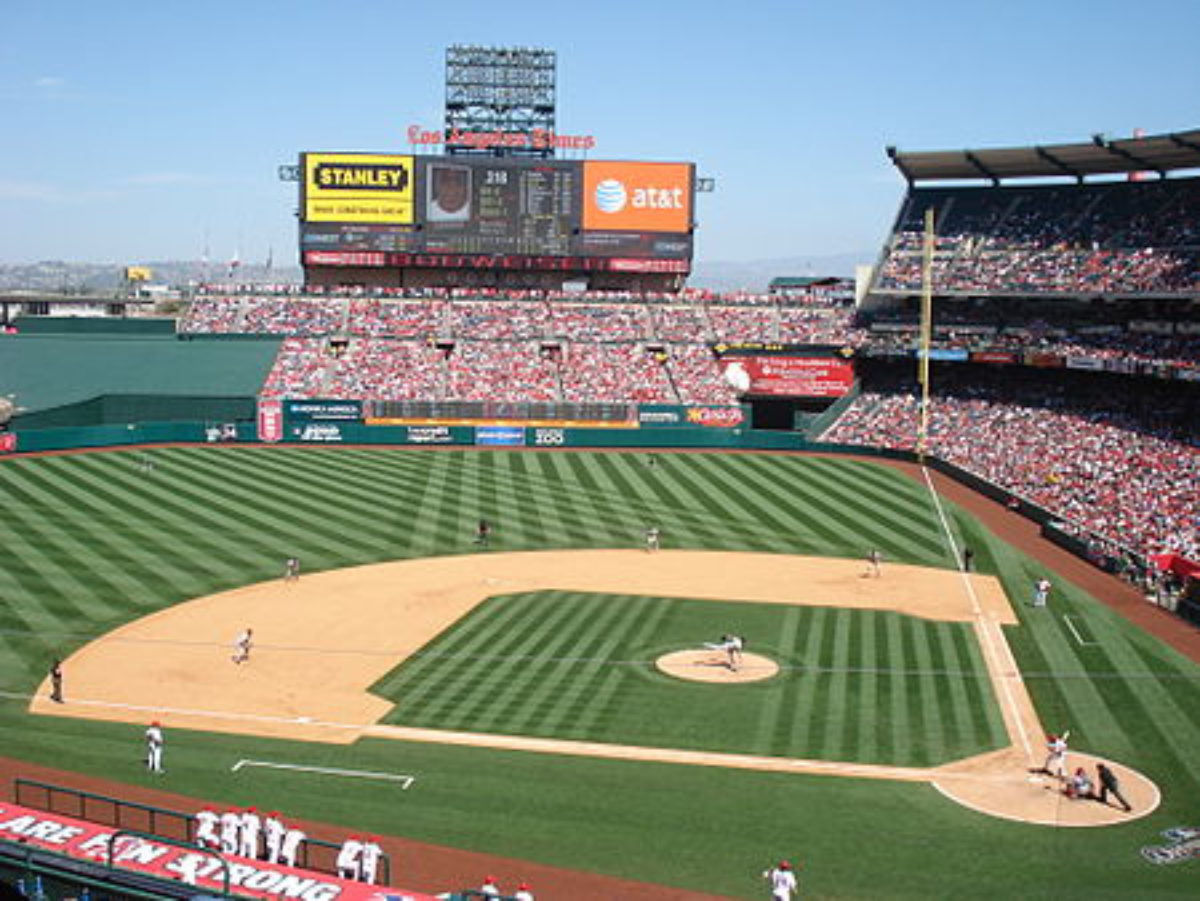We have discussed the basic baseball rules and strategy in whatisbaseball.com We will go into some more advanced baseball rules and strategy. Please bear in mind that these rules and strategy are for the professional and high amateur level of baseball. The more informal games may use only some rules or modify them to suit the level and age of play.
To quickly review the object of the game. Which is to hit a ball, thrown by a pitcher, with a bat and run (counter-clockwise) to four bases which then produces a “run”.
To produce a run, a player must touch each base (first base, second base, third base, and home base)after he hits the ball into “fair territory”. The team with the most runs at the end of the game is the winner. The team “in the field” or on defense will try to prevent the batter from doing this.
We left off in the basic rules and strategy article with what happens when a game is tied at the end of 9 innings. The answer is the game goes into “extra innings” until enough runs by either team give’s them the victory.
Doubleheaders
This term may confuse someone new to the game as to what is a “doubleheader”. The fact is very simply explained as two teams playing two games in one day.
In the major leagues of professional baseball, both games are scheduled for 9 inning games. In minor league (term to be explained) baseball the second game is usually 7 innings. In years past a doubleheader in MLB (Major League Baseball) might be played in two different cities.
For example, a game starting in the early afternoon or even late morning might be played in New York and usually, the visiting team (maybe Boston Red Sox) after the game with New York would then travel to Philadelphia to play an evening game.
Back in those days (1900-1950 +) MLB’s most teams were in cities that were relatively close to one another, St. Louis is the furthest in the “West”. Air travel was its infant stage, but travel by rail was available and reliable. It was still very exhausting for teams to play a game early in the day and then travel by rail to another city for an evening game.
This type of doubleheader did not occur more than 2-3 times a year and was only done to keep the scheduling of MLB on an even keel. In modern times even with fast air travel available, this practice does not take place today as MLB has been established coast-to-coast in the United States and would be even more tiring nowadays than was in earlier times. if not impossible to accomplish.
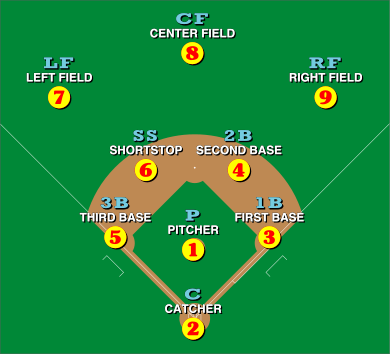
Ball Field Description
The game is played on a field (often called a diamond) whose boundaries extend from Home Base (Plate) and extend at a 45-degree angle left and right which is the left field foul line and the right field foul line.
Anything to the left of the left foul line is considered in foul territory and does not count as a fair ball but is considered a strike this is only when the batter hits the ball into foul territory and is not caught on the fly by an outfielder or infielder.
A ball caught by a fielder in “foul territory” is still considered an “out” or a ball that is thrown by a fielder from “fair” territory into “foul” territory is considered to be in play, usually, this occurs when the throw is erratic and is called an error.
The part of the field that is enclosed by the bases (first base, second base, and third base) is called the infield, this includes the dirt area several yards beyond the bases.
The area beyond the infield is called the outfield which extends to a fence which consists of a material that provides flexibility for the safety of the outfielders. This fence extends from several yards to the left of the left field foul line to several yards to the right of the right-field foul line. This may vary with different stadiums.
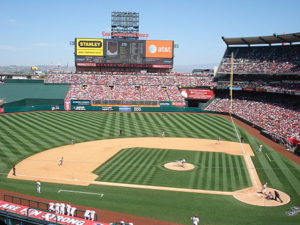
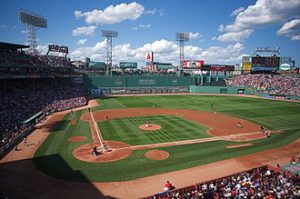
The pitcher’s mound is 90 feet from Home Plate and is raised a few feet above the infield level.
The pitcher stands on a rubber plate at the center of the pitcher’s mound. The pitcher will stand on the plate to indicate that he/she is ready to throw the ball and it is up to the batter to be ready to swing the bat when the pitch is thrown.
The pitcher may not stand on the rubber and throw the ball to any of the other bases in an attempt t to “pick-off a runner”. He must be “off” the rubber to make a throw a pick-off throw.
The batter stands in the batter’s box which is at Home Plate either on the right side in the batter’s box or in the left side. The Batters Box is ahead of the catcher and the umpire stands behind the catcher.
The umpire will call the pitch either a ball or a strike or a foul ball (strike) if the batter swings and hits anywhere outside of the fair territory. Note: If a batter has two strikes on him and hits a foul ball (strike) is not out as the third strike must occur with no contact of the bat on the ball.
Any ball hit by the batter that leaves the playing area may be a “foul ball” if hit on the ground or in the air in foul territory. It is considered a “Home Run” if the batter hits the ball over the fence in fair territory.
The batter leaves Home Plate than runs to the 3 bases and touches Home Plate and scores a run. During a Home Run, the defense may not impede the runner in any way
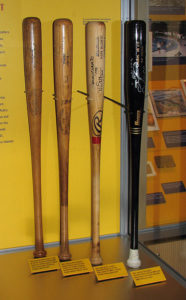
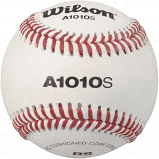
Tools or the Game
There are three primary pieces of equipment. The first one is a baseball which is about 9 inches in circumference, a bat which is the hitting tool which is a single solid piece of wood and a glove or mitt which made of padded leather with webbing between the fingers.
The glove can take different shapes and sizes depending on the position the player is playing. For example, a catcher may have a more circular glove for catching the pitchers throw. A first baseman may have a single large webbed glove to catch balls thrown by the infielders or outfielders. Players may have individual tastes as to brand and construction of a glove.
Other pieces of equipment are a plastic helmet for head protection, uniforms for professional and for most amateur teams, special spike shores for good traction, baseball hats (comes with a uniform) and other miscellaneous items.
Descriptions of hits
Single-A ball that is hit which lands in “fair territory” and is not caught by a defensive player and hits the ground is called a hit. The batter now called a runner arrives at first base before the ball is thrown by a defensive fielder to the first baseman. This is called a Single.
*Double This is when a ball is hit in fair territory and the batter/runner is able to run to second base without stopping at first base (must touch first base with foot) before the throw from a fielder is received at second base.
*Triple-A ball hit far enough into the outfield and not caught by an outfielder allows a runner to run to third base before the outfielder throws the ball to the third baseman. Again the runner must touch first base and second base.
* If the throw from the outfield arrives before the runner, the infielder with the ball must tag the runner, provided he is not touching the base, then the runner is out.
Home Run A Home Run is when the ball is hit over the fence in fair territory (professional and some college level parks) When a home run is hit in a fenced stadium the runner must touch all the base but no attempt is allowed by the defense to impede his trot around the bases.
In parks where there is no fence, a home run would be when the runner touches all the bases, first base, second base, third base and finally touches home plate without being tagged by a defensive player.
Scoring is when a runner who already is on first base, second base or third base runs to home plate as a result of a hit by the batter and the fielder does not get a throw to any infielder to tag him out before he touches home plate.
One run is earned each time a runner on any base touche home plate without being tagged by an infielder with the ball.
These are the basics and objectives of the game and now we will discuss more advanced rules and strategies
DH
In the American League of MLB and certain minor leagues, there is a position called Designated Hitter. This position is not used in the National of MLB and certain minor leagues *
A Designated Hitter bats for a pitcher as most pitchers in MLB are notoriously poor hitters as a pitcher spends most of his practice time in practicing pitches while the other players practice batting or hitting the ball.
The reasoning for the DH is that it should add more scoring to the game. The DH does not play a defensive or fielding position. A DH may bat in any position in the line-up according to his ability. Usually, a DH might be an aging player whose defensive skills have wanned or never were.
(*A minor league is where an MLB team has a team for players not ready for the Major Leagues. This is called the teams” farm team” It may extend several layers such as AAA-the highest, AA, A, etc. These “farm teams” are usually in smaller cities across the United States that do not have a Major League team)
MLB Players Assignments
The number of players on a baseball team varies by league and level of play. In MLB and some minor leagues, the team roster consists of twenty-five (25) players:
- eight (8) position players; the catcher, four infielders, and three(3) outfielders. These are usually the best players at their position and play on a daily or scheduled basis.
- There is usually one backup or substitute catcher.
- two back-up infielders,
- two back-up outfielders
- one utility player which may vary depending on available talent, this could be another catcher, infielder or outfielder, or possibly another pitcher.
- five (5) Starting Pitchers that are in a pitching rotation with the best performer at the top of the list.
- six (6) Relief Pitchers that are considered the teams “bullpen” which named after the off-field area (in foul territory) where pitchers warm-up.

Pitching and Fielding Tactics
Pre-game strategies may include deciding what players are most effective against an opposing pitcher. In general right-handed batters (standing in the left side of the batter’s box) are more effective against left-handed pitchers and left-handed (standing in the right side of the batter’s box) batters are more effective against right-handed pitchers.
This concept may be used through the game, for example, if a right-handed pitcher starts the game and in later innings, a left-handed is substituted for him, the opposing manager/coach may substitute a right-handed batter for the starting left-handed batter.
(Note: Once a player or pitcher has been substituted for, the player being substituted for, can no longer play for the remainder of the game).
The pitch selection. There are four different types of a pitch which the pitcher throws, there are many more types beyond the basic.
1. Fastball. This a pitch where the pitcher throws it as hard as he can.
2. Change up. This pitch is thrown a lot slower than a fastball or curveball.
3. Curveball. This pitch makes a slight change of direction toward the right from a right-handed pitcher and when it goes to the left from a left-handed pitcher is called a screwball. The right-left direction is from a batters viewpoint.
4. Slider This pitch is a slight variation from the curveball. It usually is slightly faster than a curveball and changes direction a lesser amount.
The subtitles in how a pitch is thrown to achieve these pitches will not be discussed. In general, it is how the pitcher holds the ball that will cause these pitches to perform.
Defensive strategies include
- Pick-off (an attempted throw from the pitcher to an infielder to tag a base runner who might have too big of a lead off the base they are on.
- Infielders guarding against a stolen base, by playing closer to the appropriate base than normal.
- Outfielders and infielders shifting in a certain direction (usually left or right a few yards) as the batter may have a habit of trying to hit the ball in that direction; this is called a “shift”.
- Infielders playing closer to home plate than normal to enable a play at the plate is called “infield in”, this will enable an infielder to be closer to Home Plate to throw the ball to an appropriate base to force a runner out (this is like a ground ball hit to an infielder who throws to first base ahead of the runner, in this case, a play could be made at second base or third base as the situation dictates .
- Another tactic is “playing for the bunt” runner may be on any base and the third baseman and first baseman play half way in from their normal positions to field a bunt if a batter tries to bunt the ball.
Batting and Base Running Tactics
Several basic offensive tactics come into play in certain situations. While a very fast runner on first base may attempt to run to second and a runner on second base may run toward third base on a pitch and the batter doesn’t hit the ball, the catcher throws the ball to either the shortstop, second or third baseman covering the base.
If the runner gets to second base (or third base) before the covering infielder can tag him with the ball it is called a “stolen Base” If the infielder gets the ball thrown by the catcher before the runner gets to second or third base and touches with the ball the runner before he can touch the base, the runner is “caught stealing” and an out for the inning is recorded.
A “hit and run” play is similar to a stolen base attempt when a very fast runner is at first base and the batter is very skilled a just hitting the ball on the ground in the infield usually toward the “hole” between first and second base.
The “hole” meaning if hit hard enough the first or second baseman cannot field the ball. It is preferred to hit on the right side any ground hit through the infield into the outfield, should advance the runner to third base as he starts runner with the pitch.
A bunt is an attempt to hit the ball just a short distance causing the fielders to have to run toward home plate giving time for the runner to advance usually to second base. The batter is usually thrown out at first base, by an alert infielder. If the batter doesn’t beat the throw to first base and is out, The batter has sacrificed to get the runner to advance a base on where he can be in “scoring” position. This is a “sacrifice hit”. No official time at bat is charged to the batter.
This is just a small number of rules and strategies discussed but this should get you started on the road to understanding the game of baseball. However, nothing surpasses attending a game.
The more you watch the game the more you will understand it. We will discuss the History of Baseball, Baseball Heroes, Baseball Hall of Fame and many other baseball related topics in future articles.
For you, Aviation buffs see Aviation Center wakebilll.com
Thanks for Reading. I Hope this was Informative

